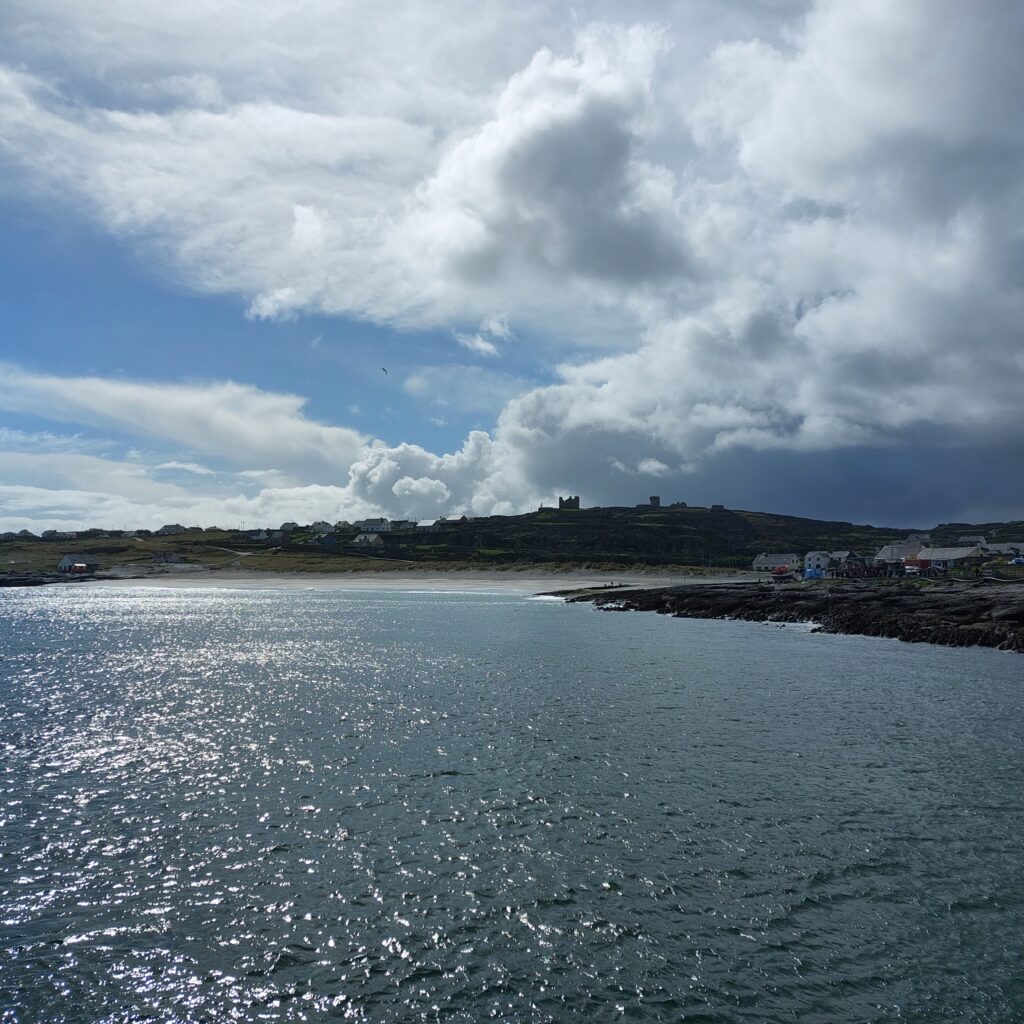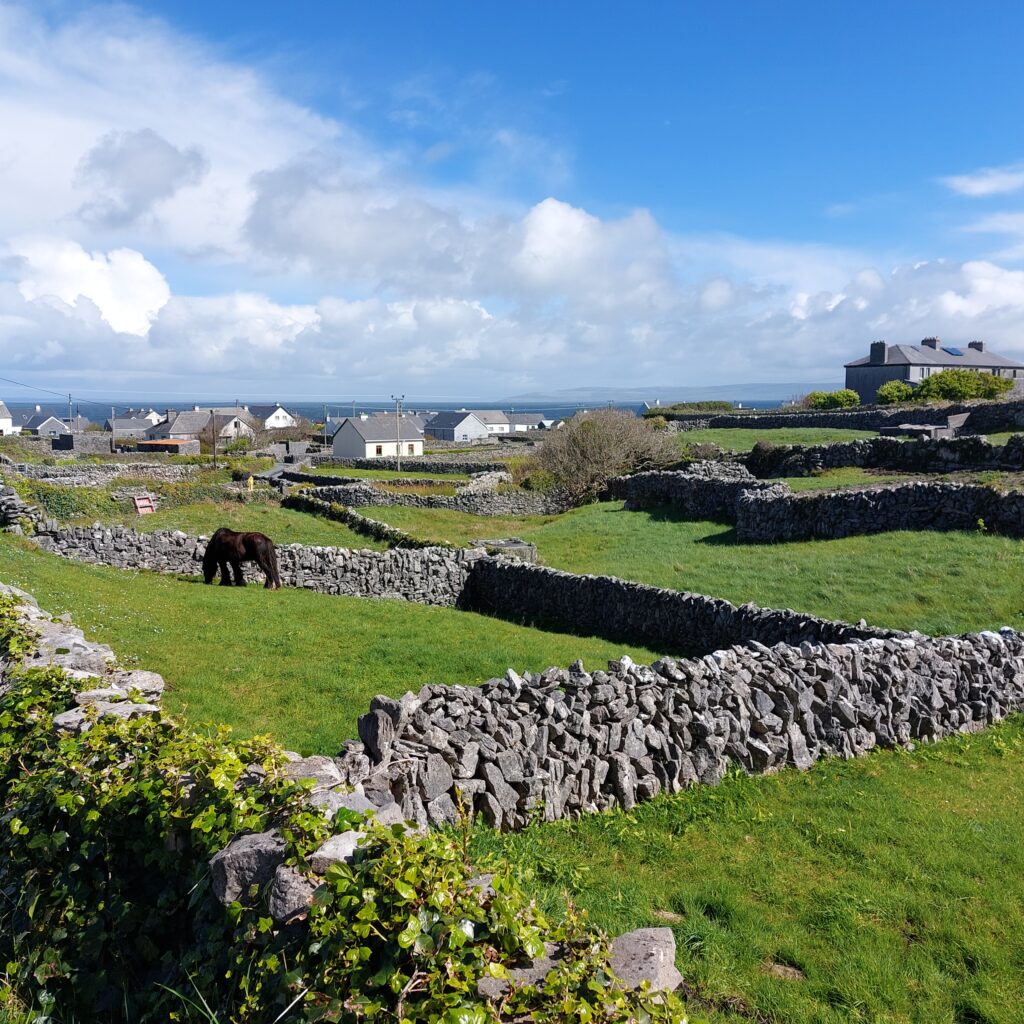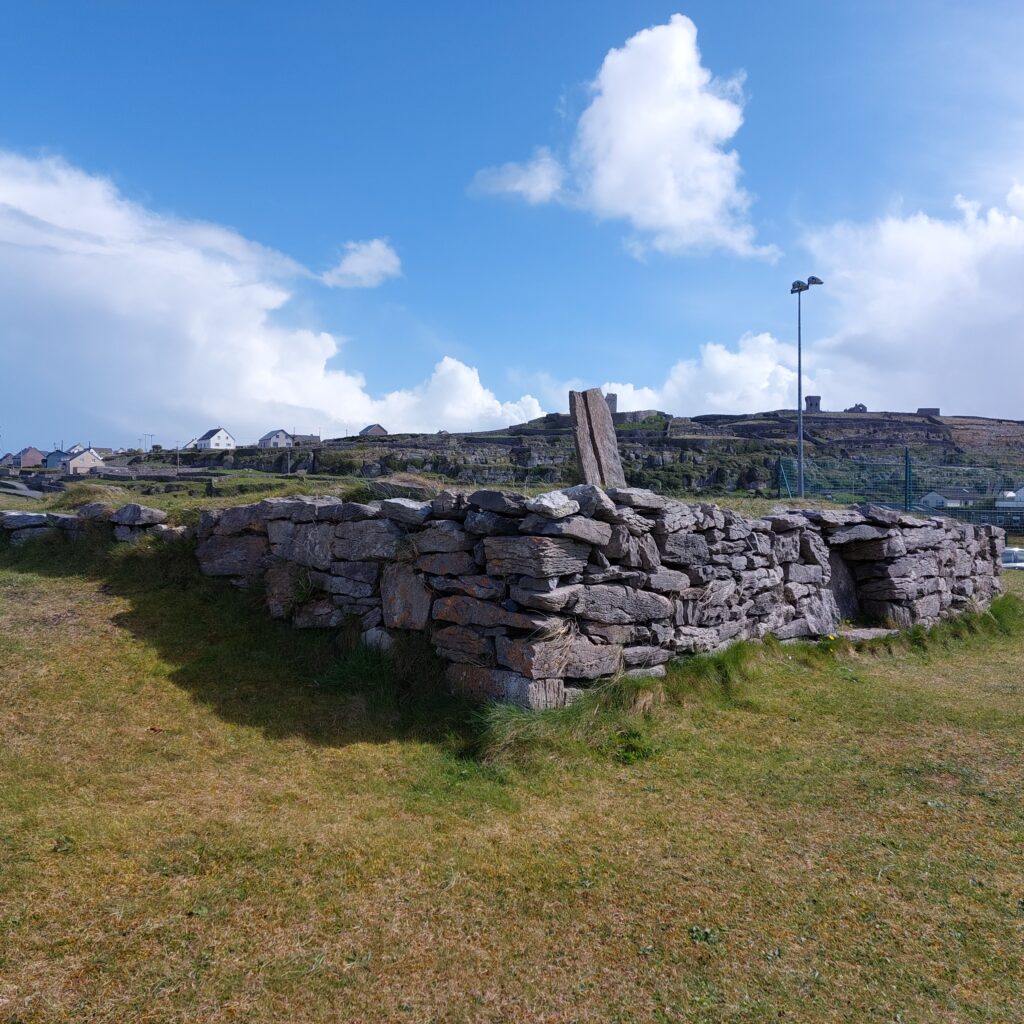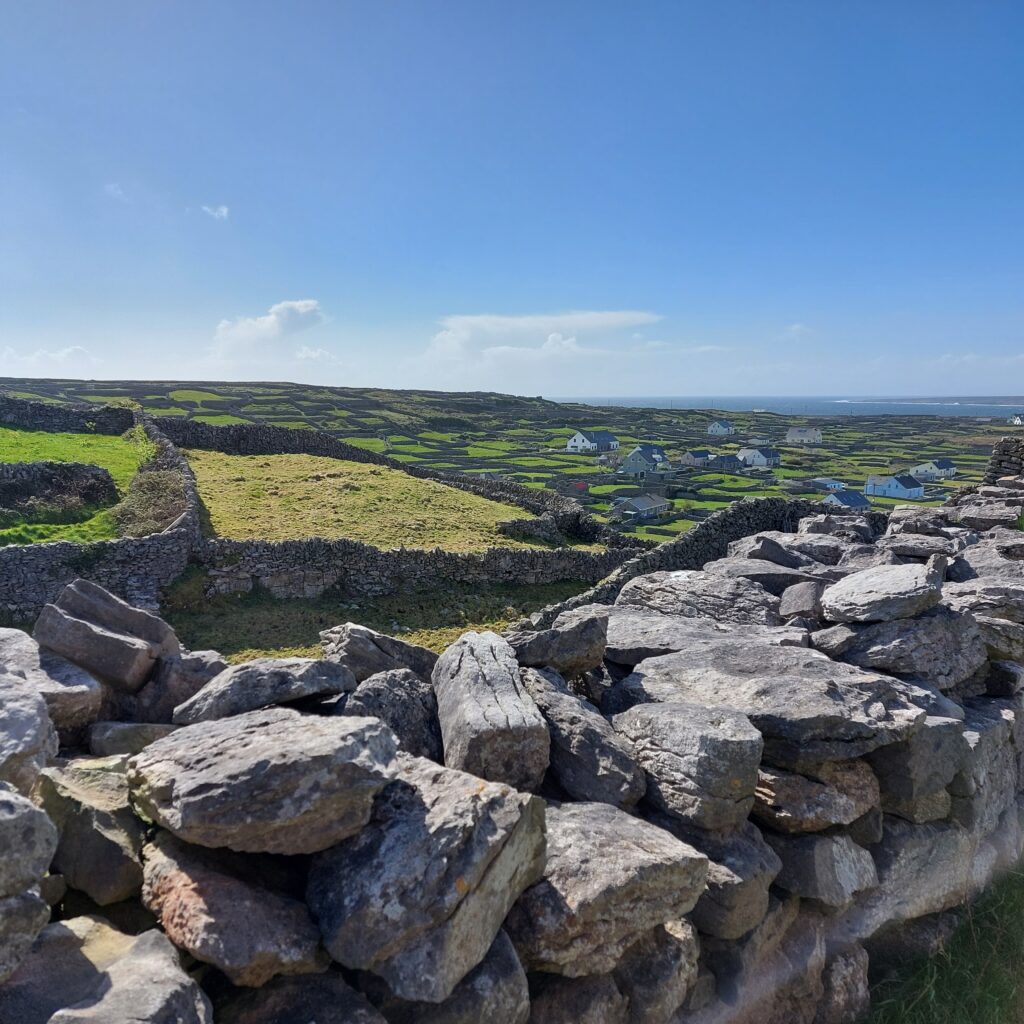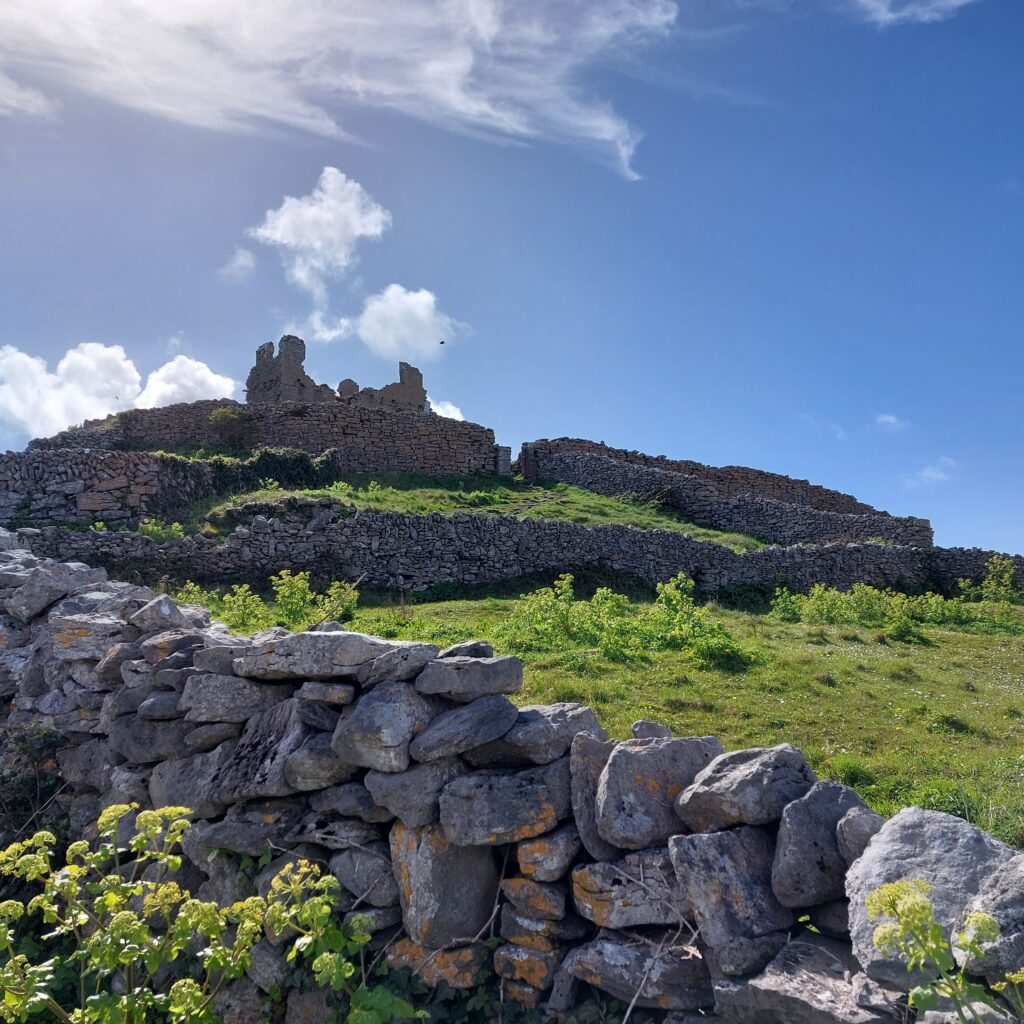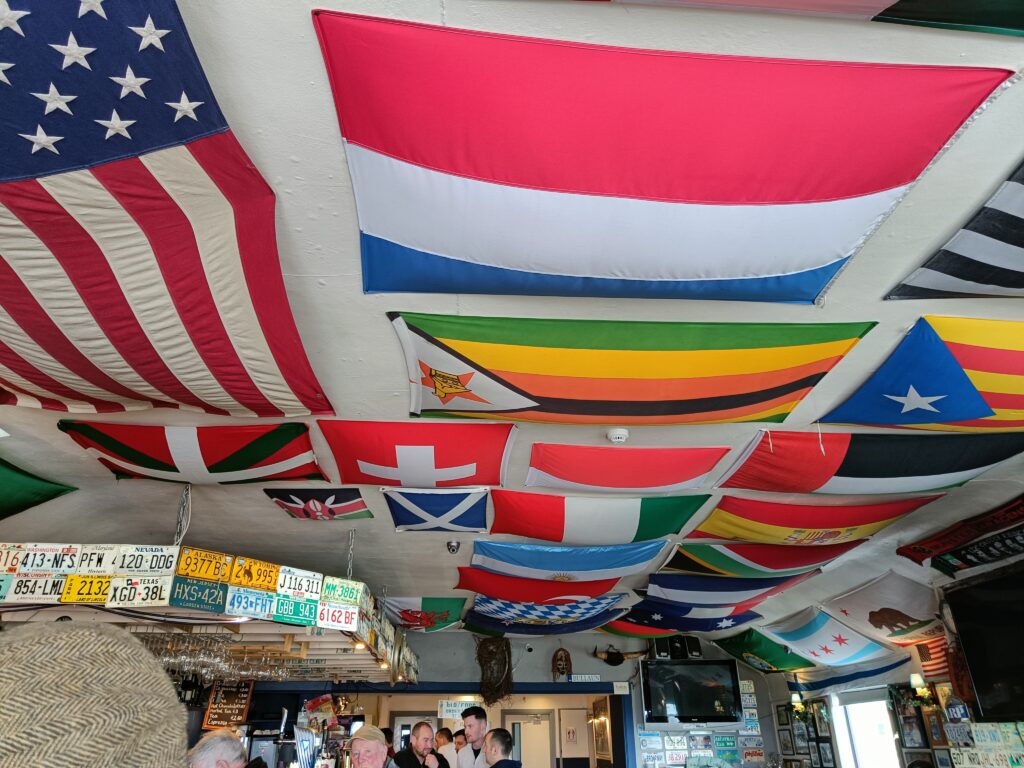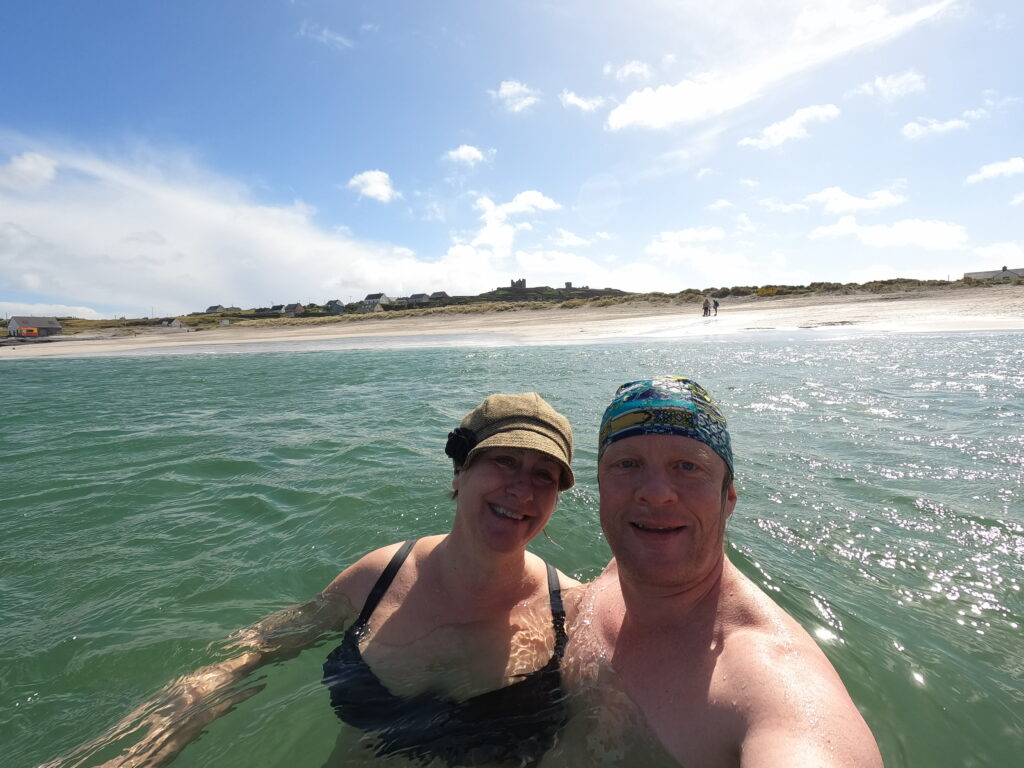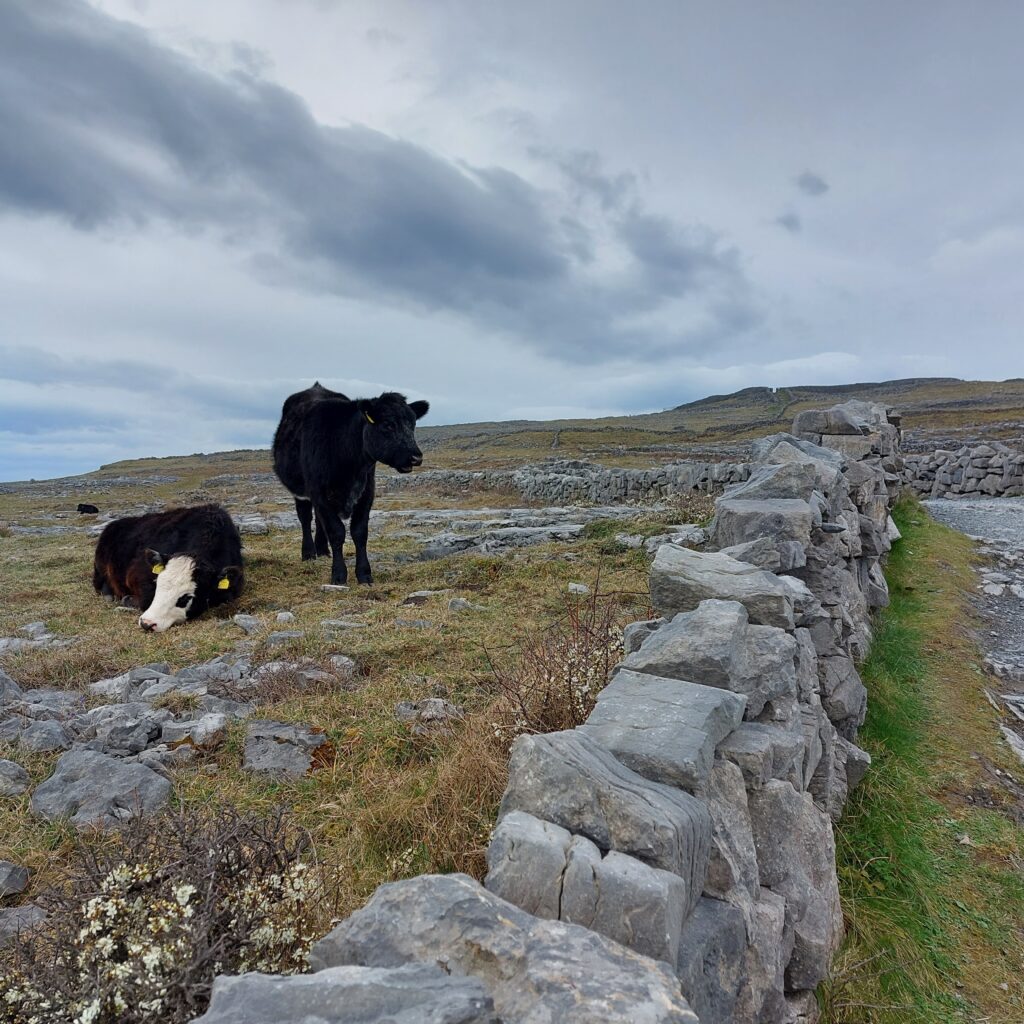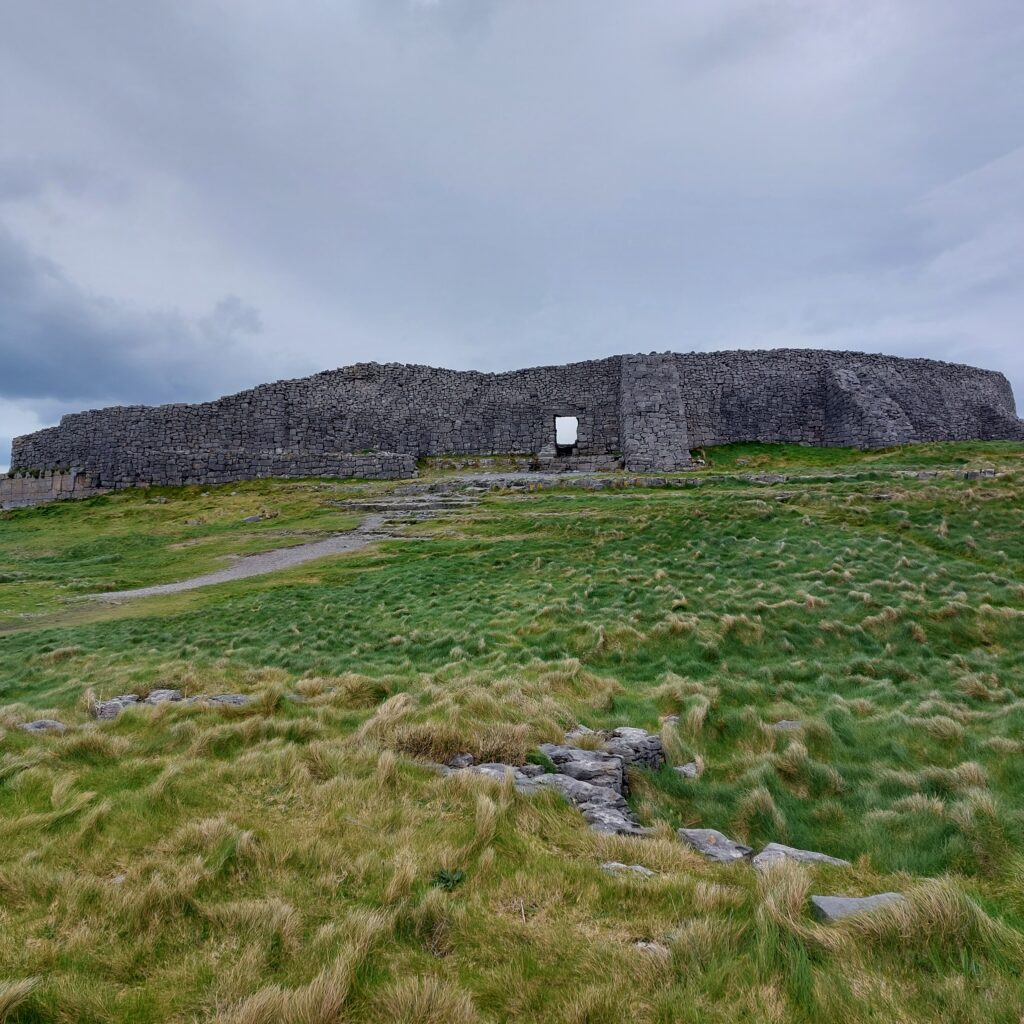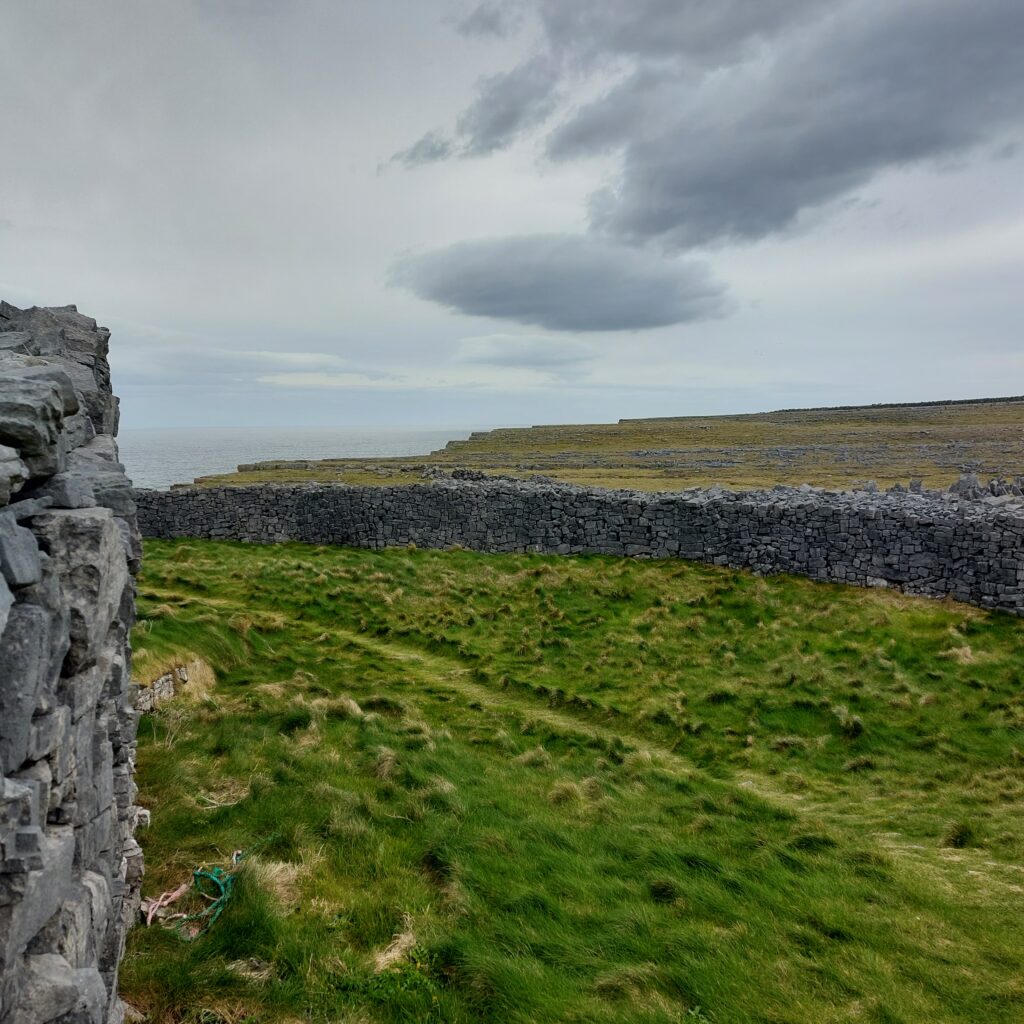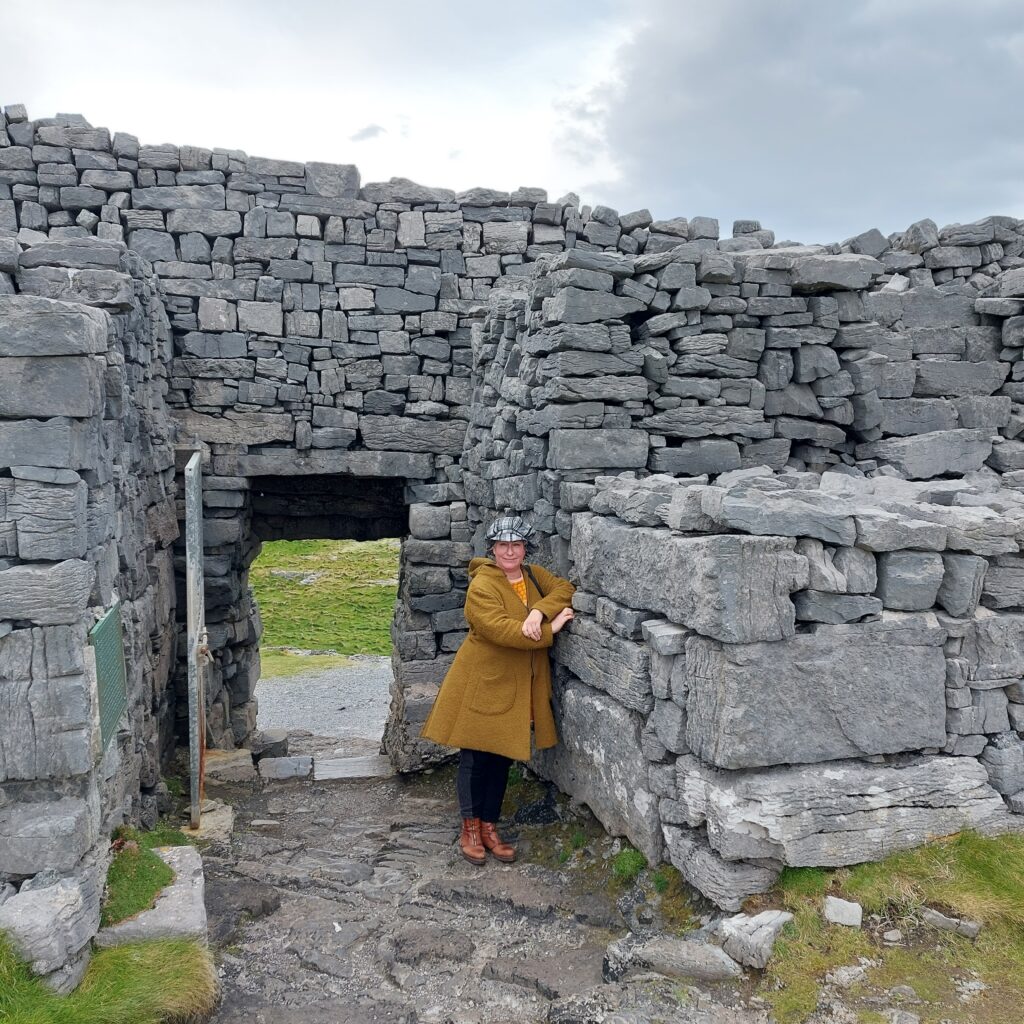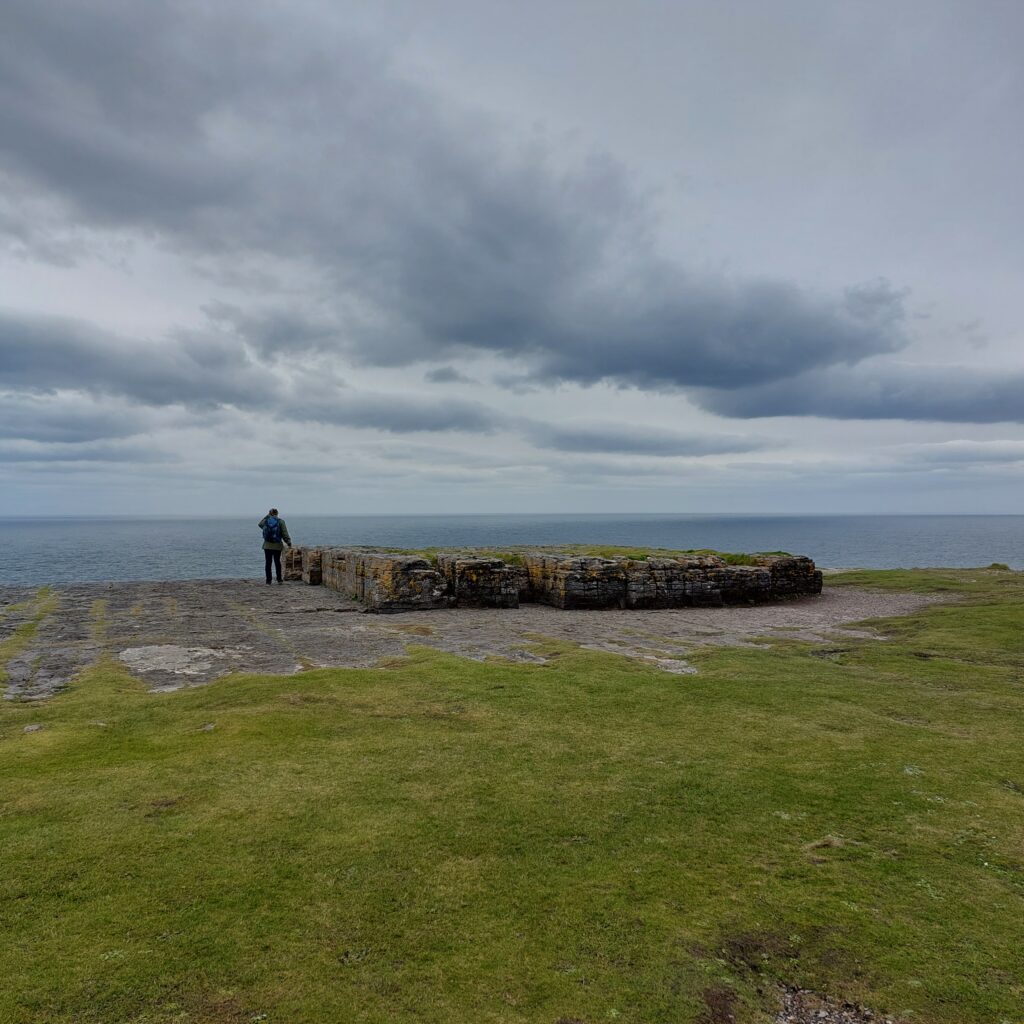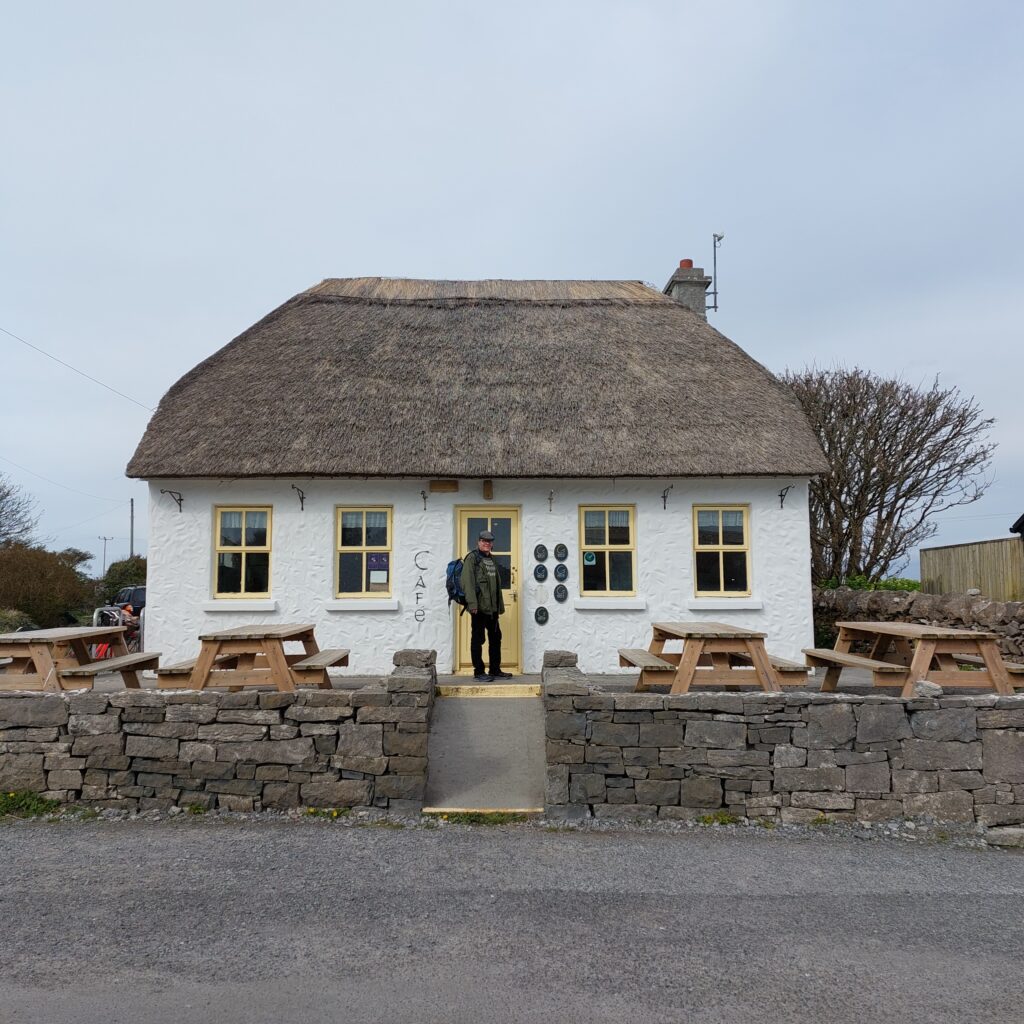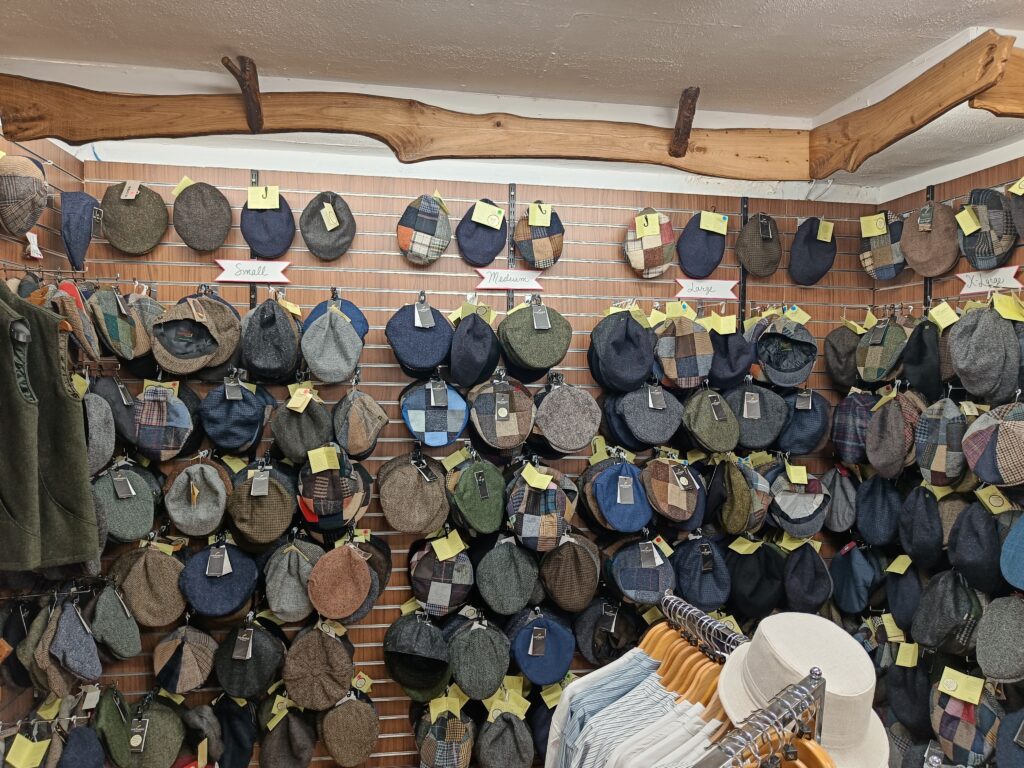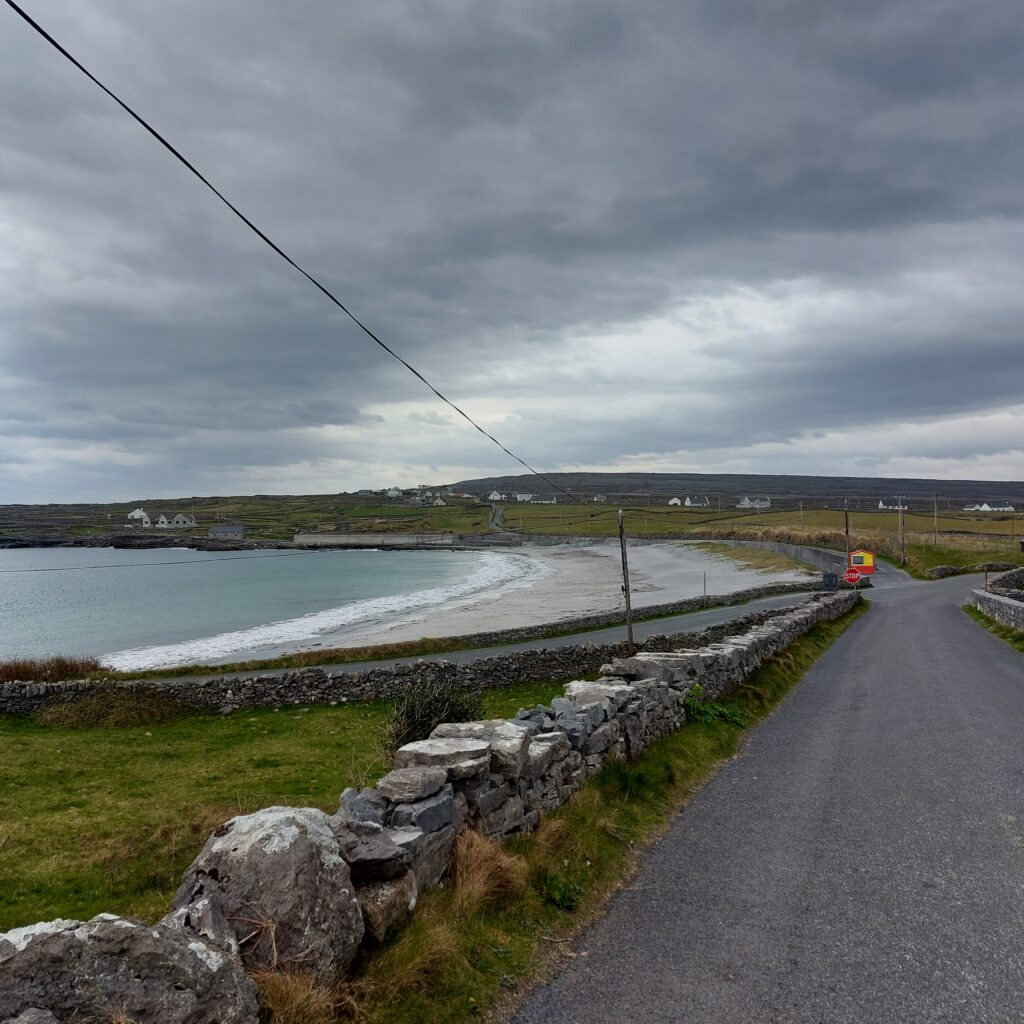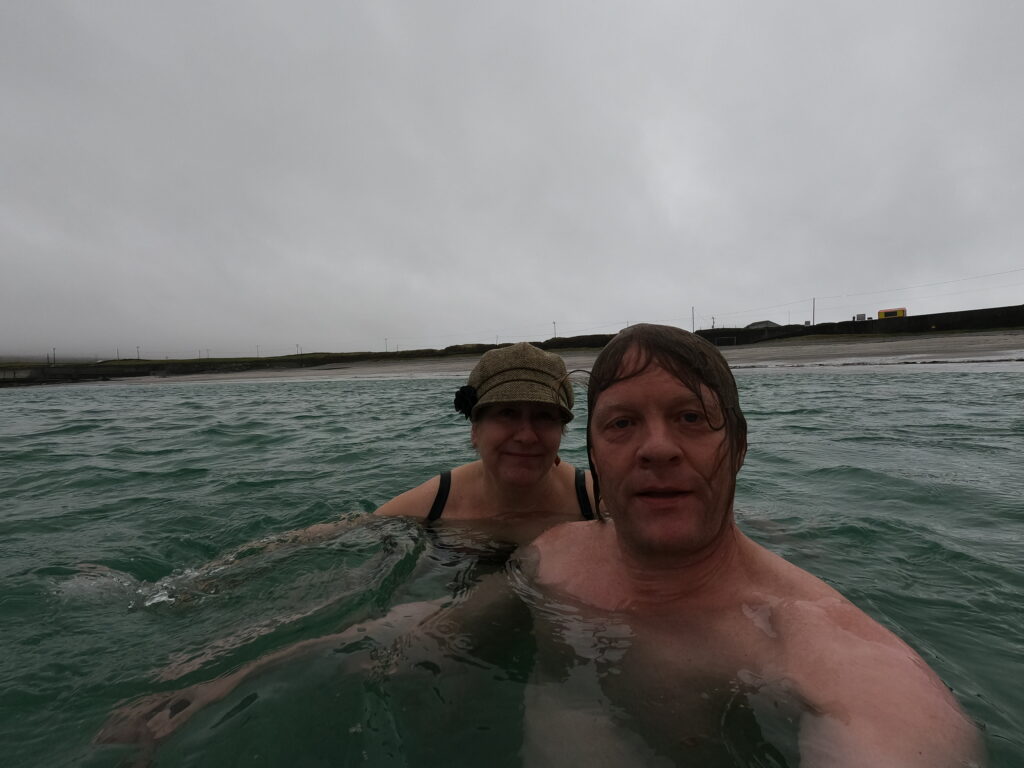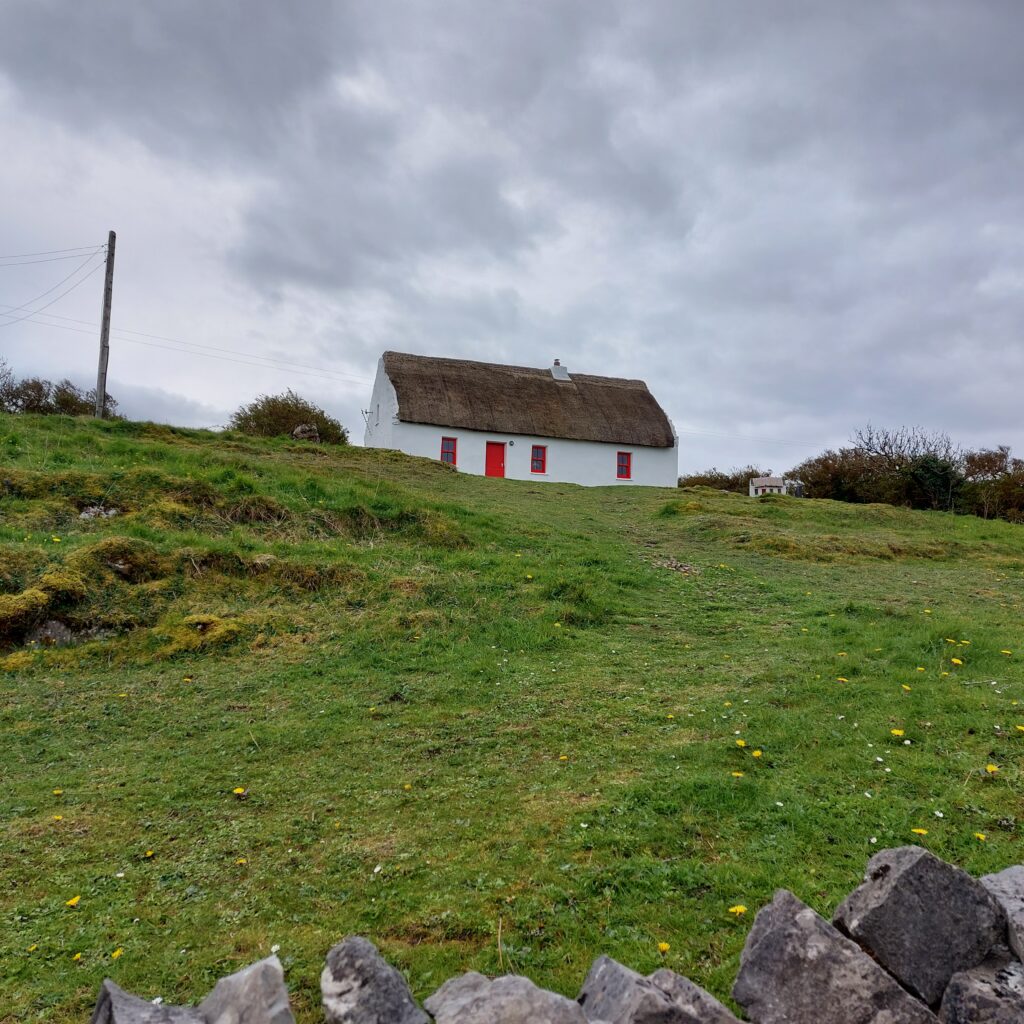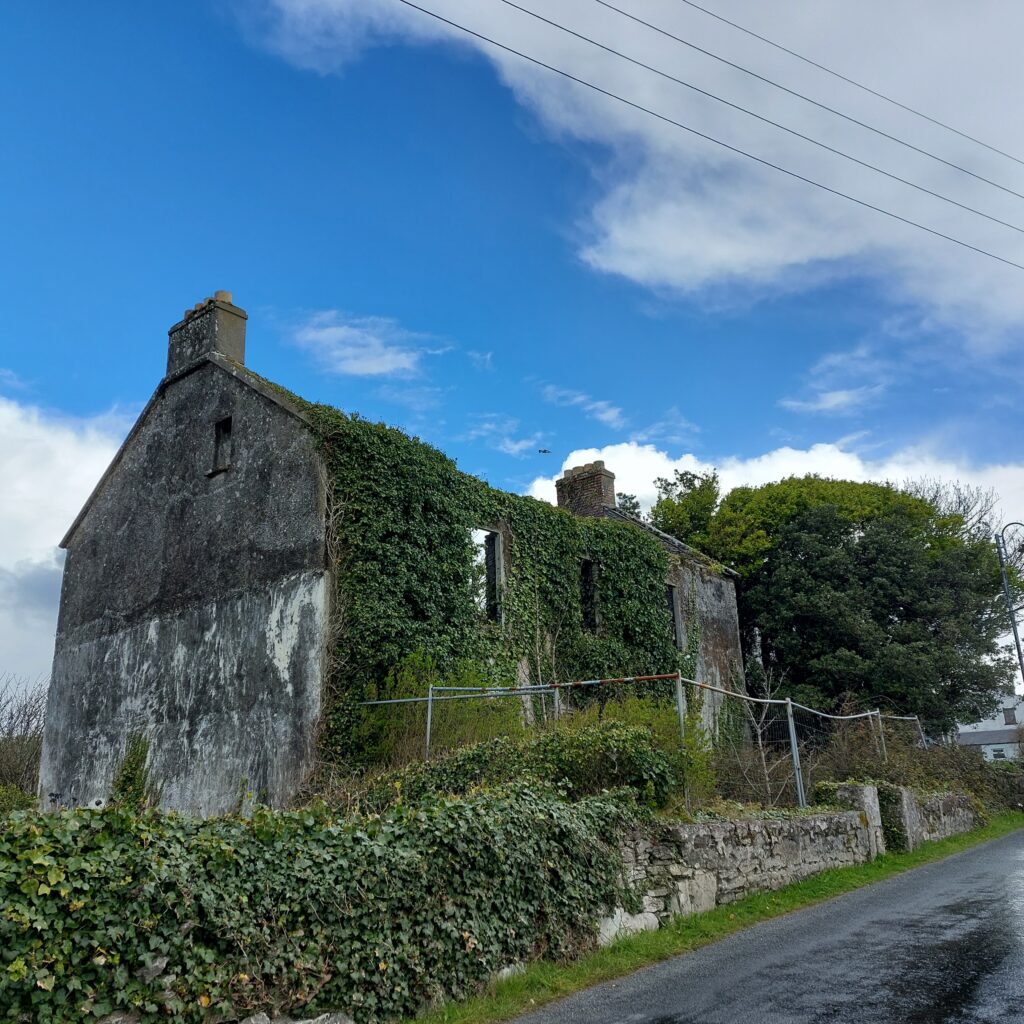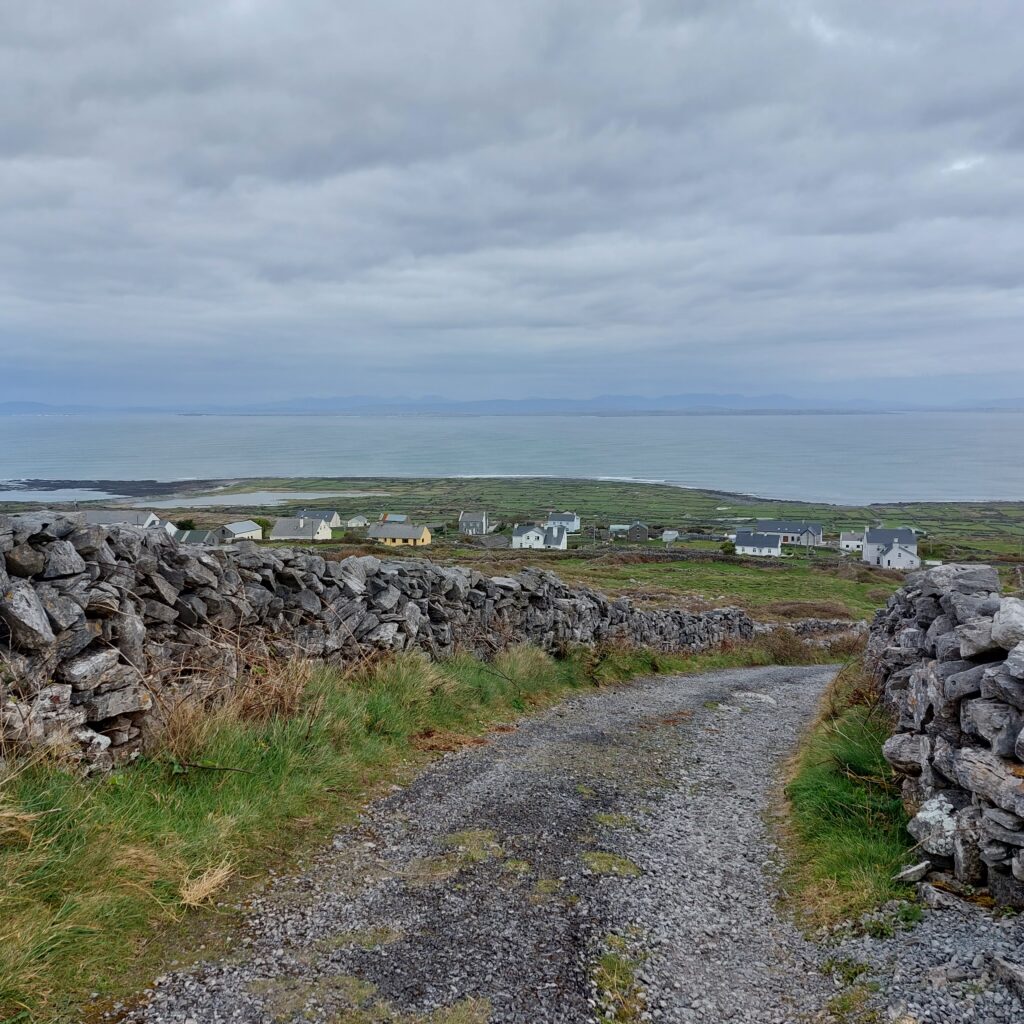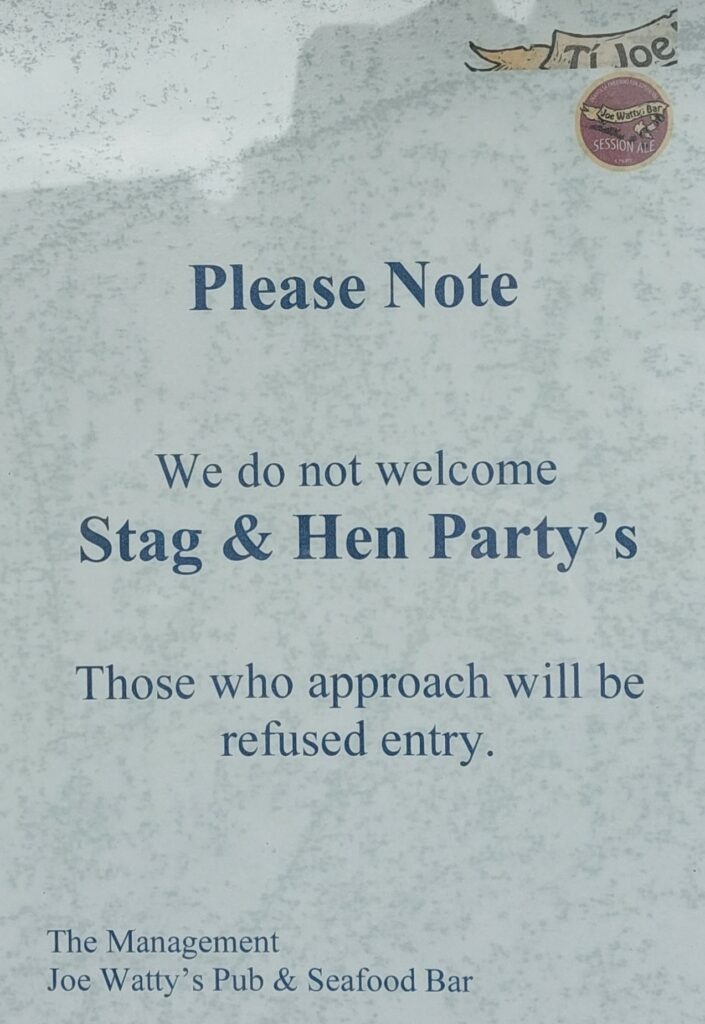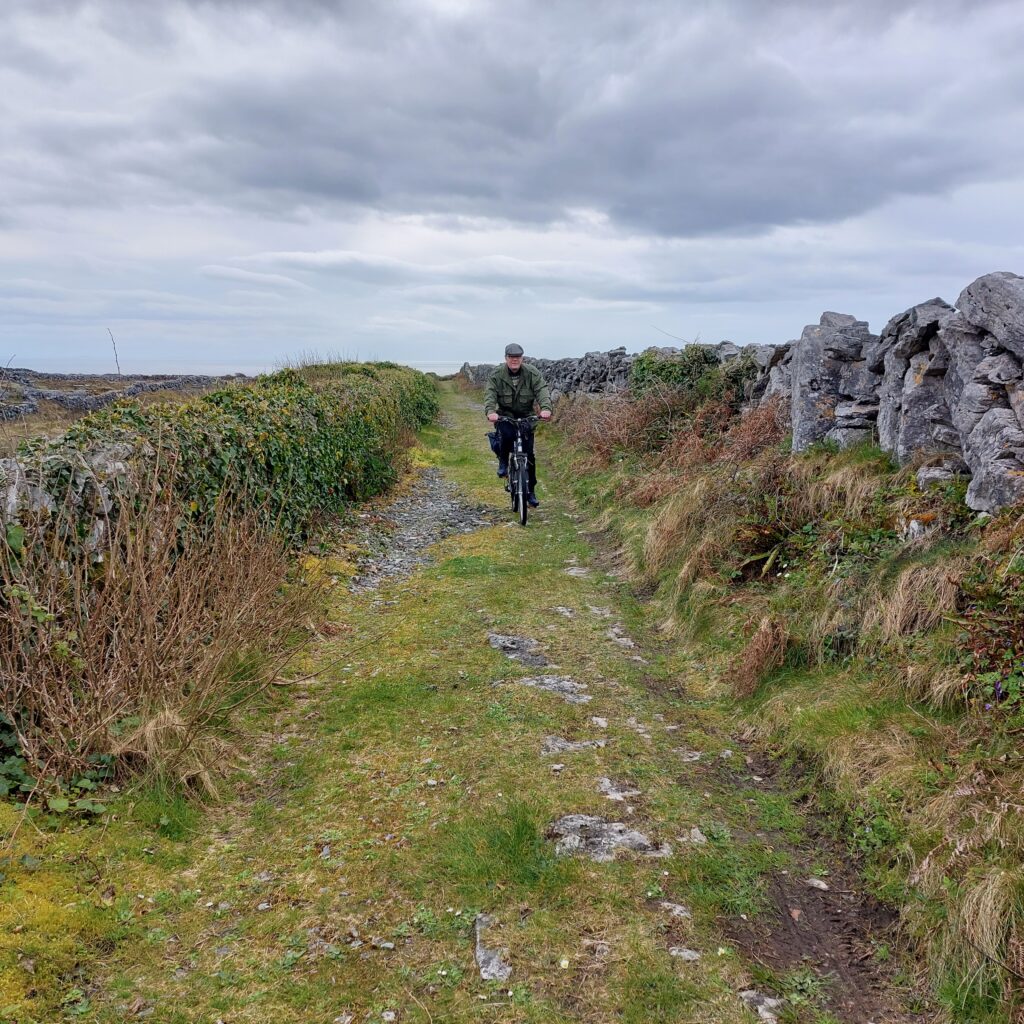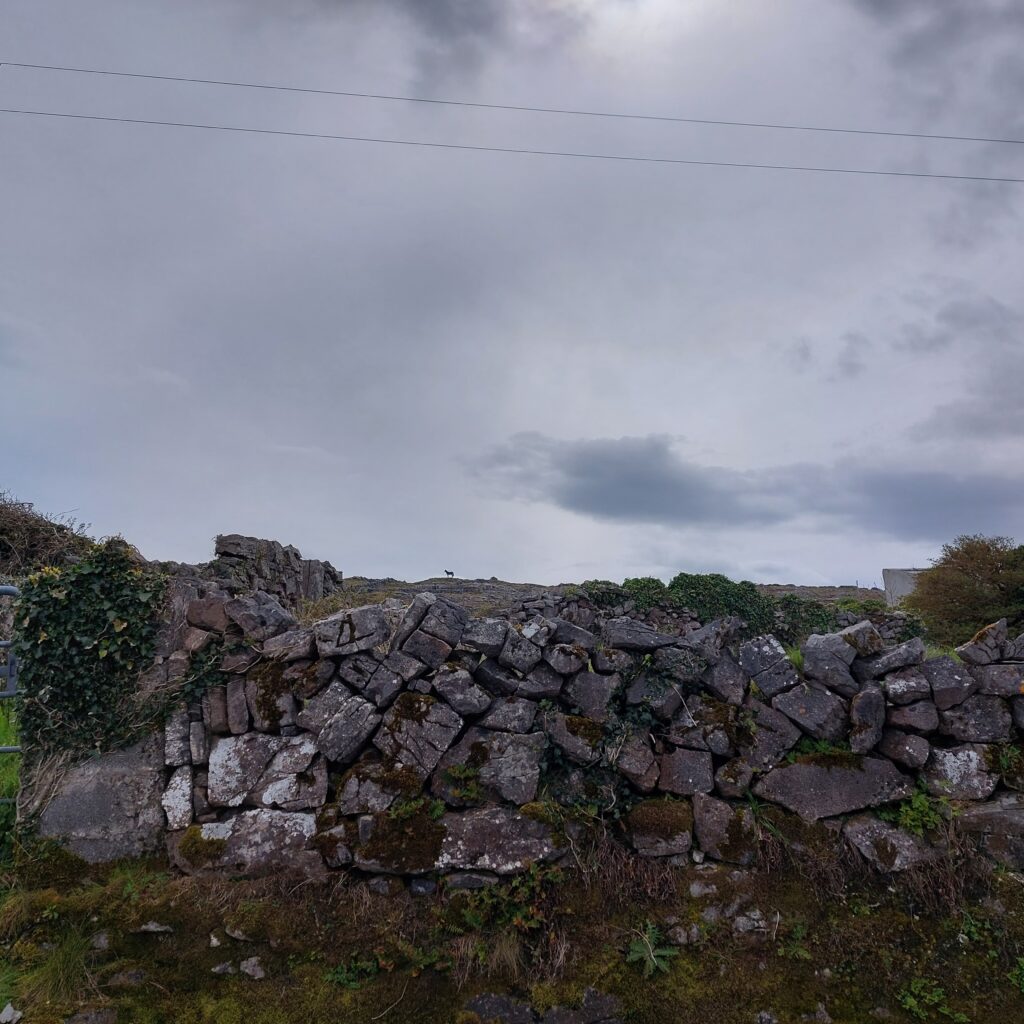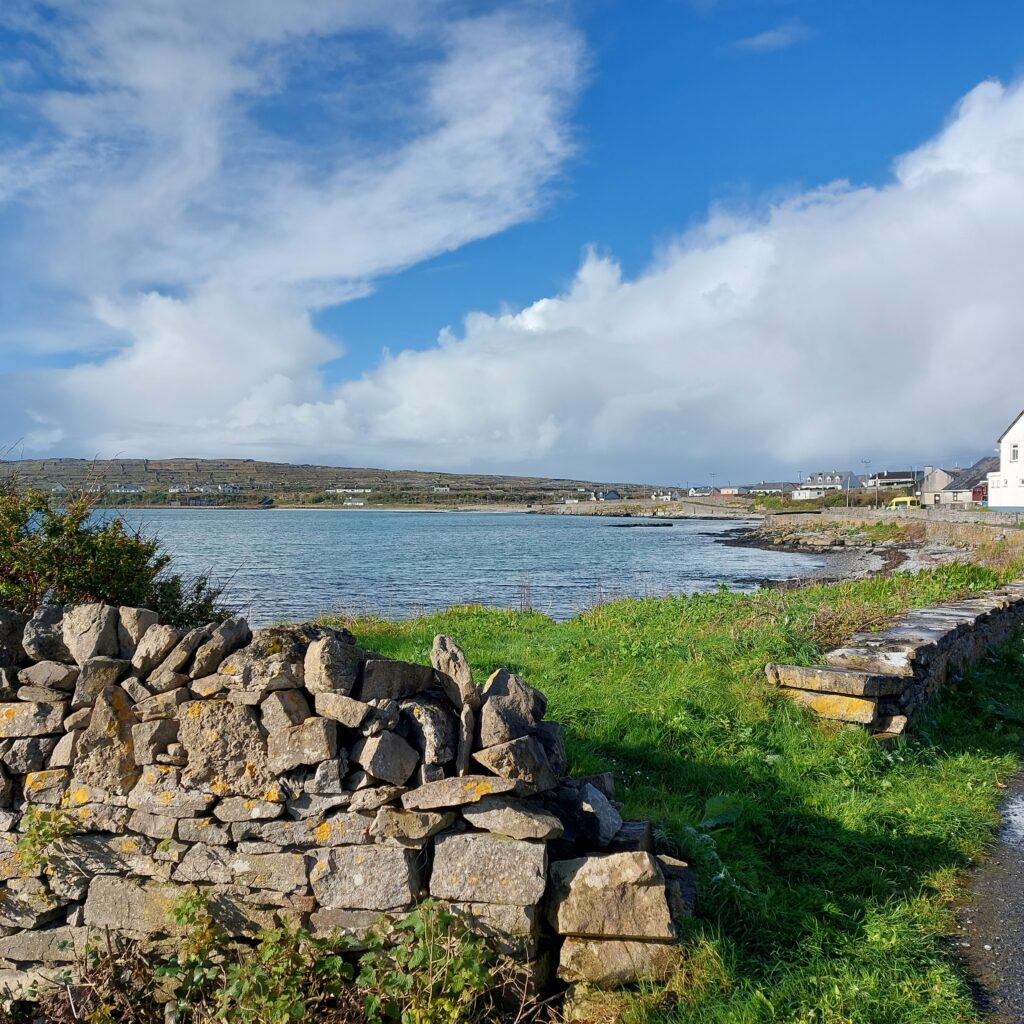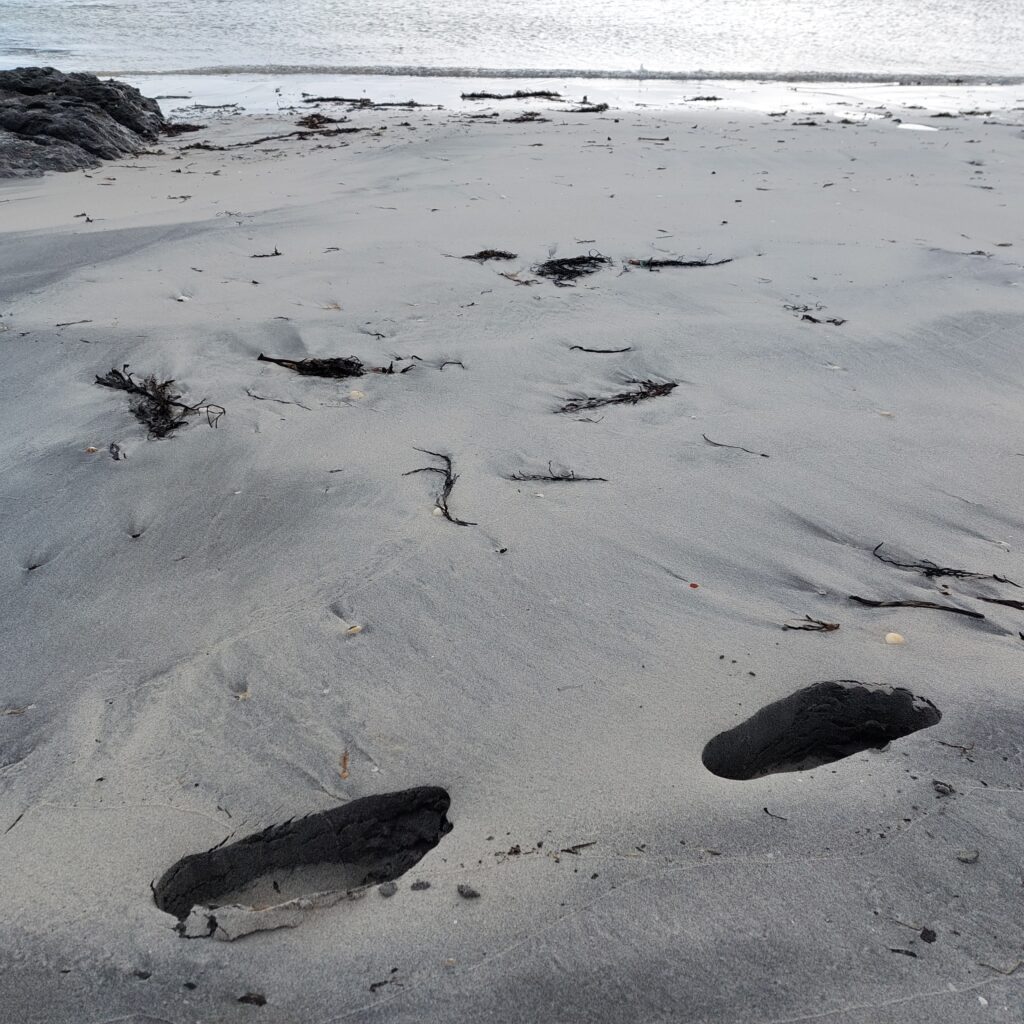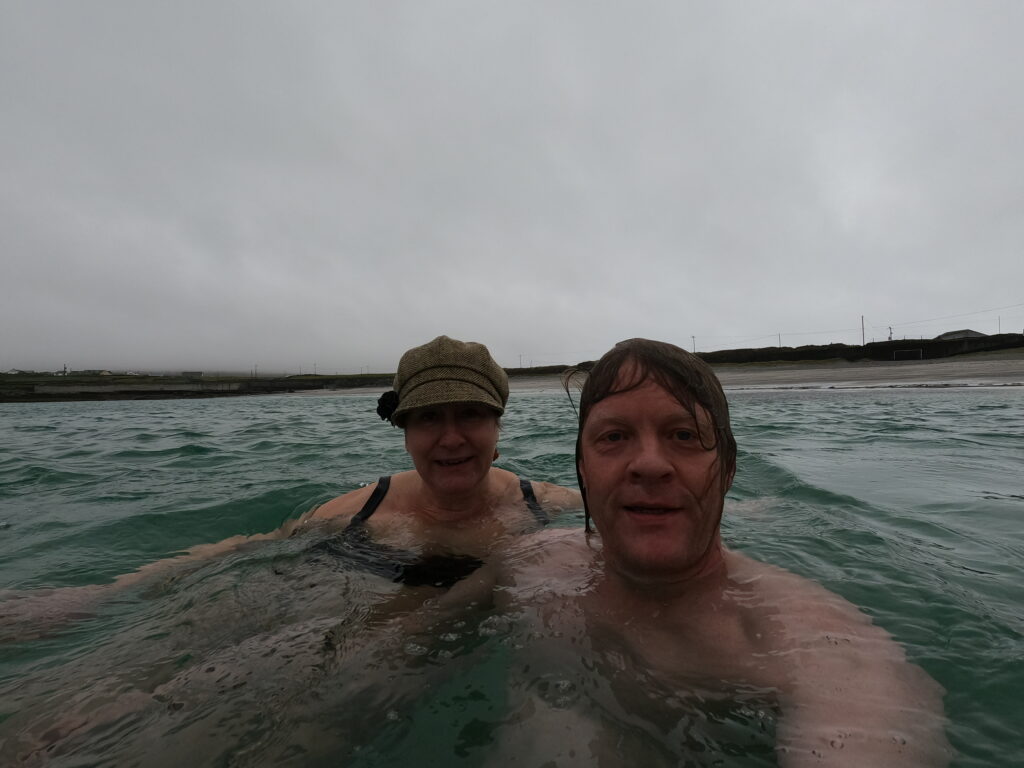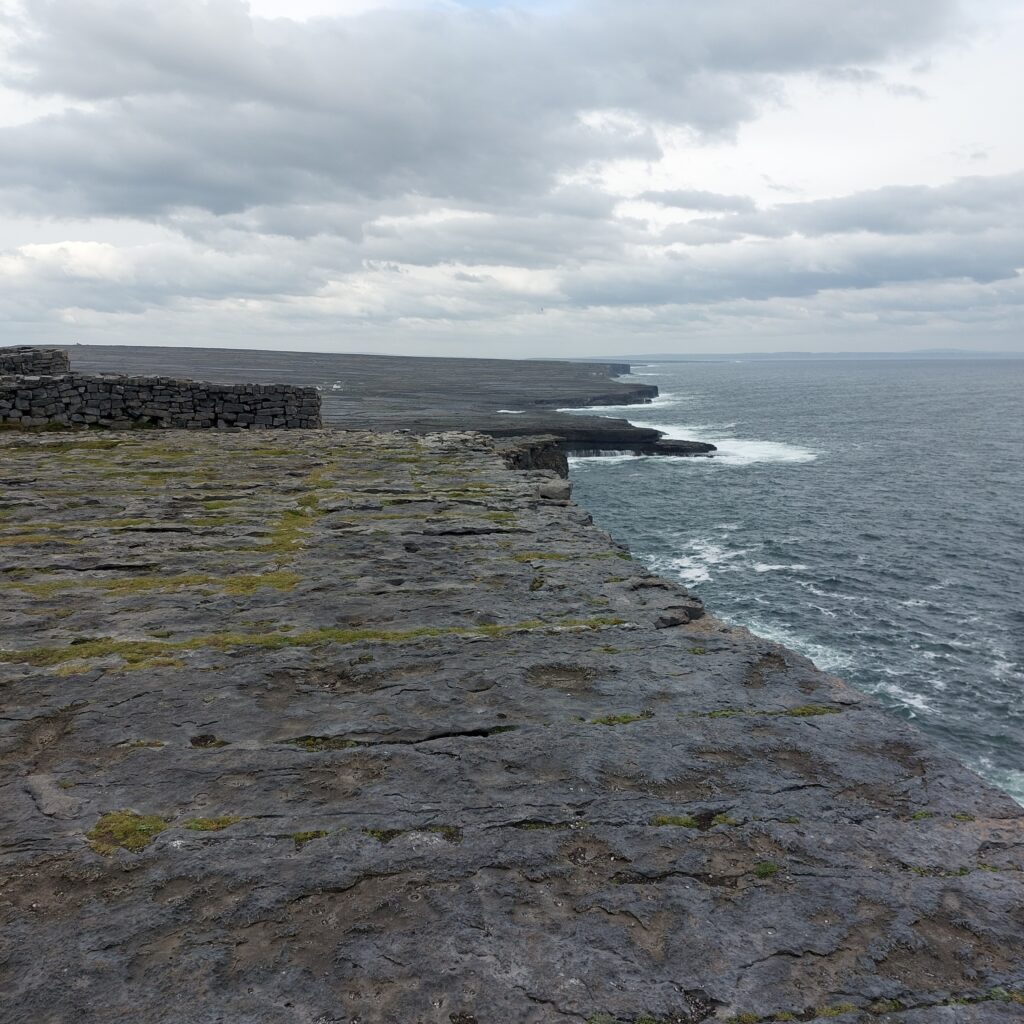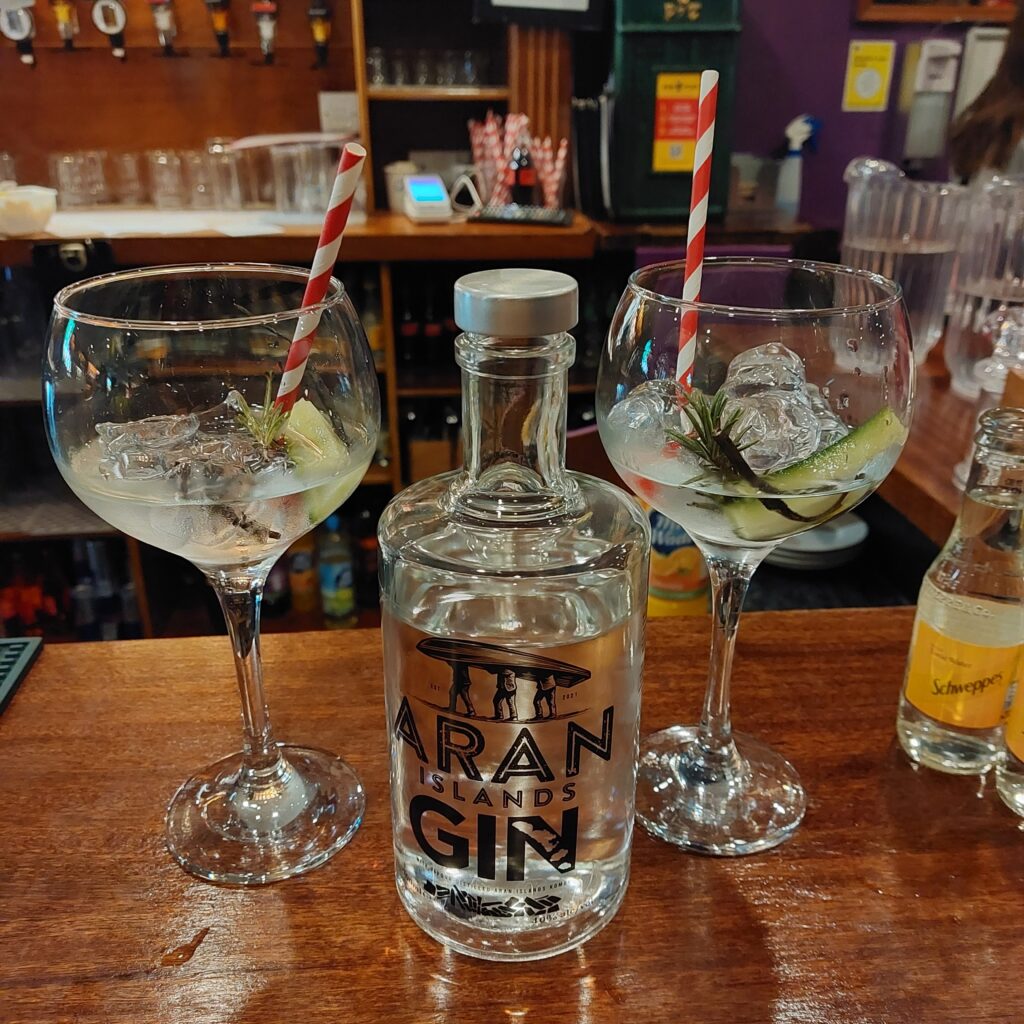On an island with almost no soil at all, one might wonder how they found wood in the past, for all possible needs. Some use simply had to be stopped – for example, firewood could be replaced by dried livestock dung. Other needs are more difficult to quit, be it trusses for roof structures, or wood for boat building. One solution could be trading with the ‘mainland‘. But something that always helped was wreck looting, stranded boats were not left untouched – everything that could be used was salvaged. And on the Aran Islands they also built boats almost without the use of wood.
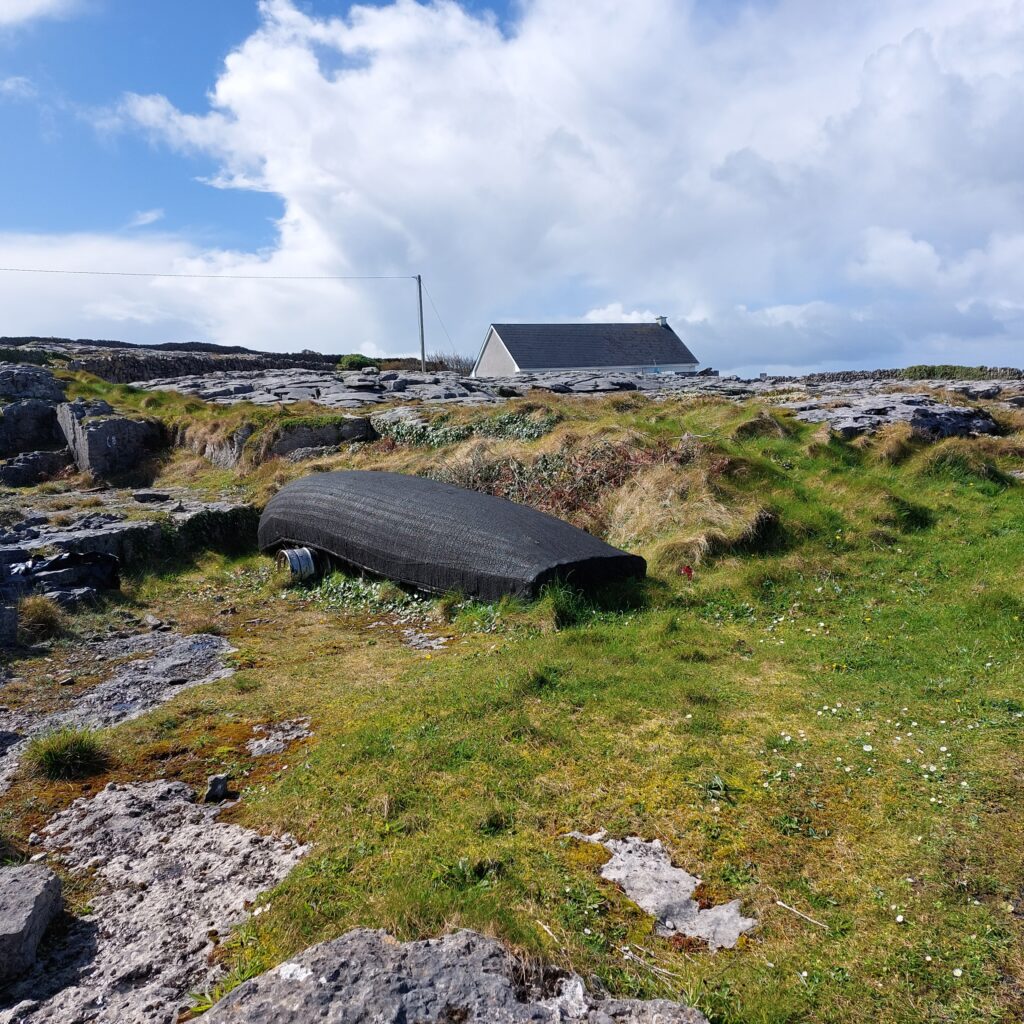
The Aran Currach is a light type of boat, built up of moldings covered with canvas and tarred. It is very well adapted to heavy sea and can withstand quite bad weather. It is said that the fishermen at the Aran Islands did not learn to swim back in the days. The idea was that if the sea was so rough that the currach went down, they wouldn’t survive anyway. Swimming skills would only prolong the agony, which would end in a certain death anyway.
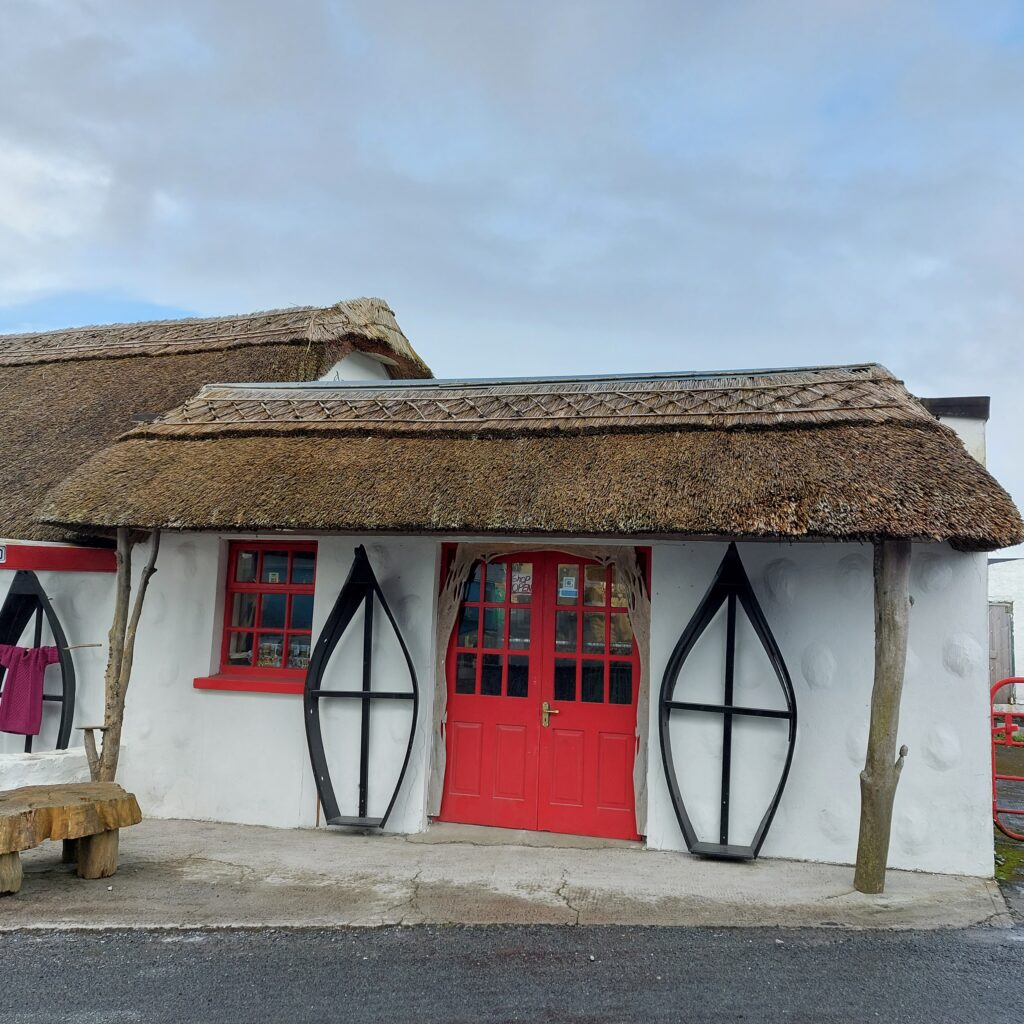
In ancient times, the currachs were covered with cattle hides, and it is considered likely that the first islanders came to Ireland and the Aran Islands in such boats (in the Stone Age). The canvas boats are vulnerable to punctures, and normal shoes cannot be used. Instead, traditional Irish leather moccasins with the hairs out, the so-called pampooties, are worn.
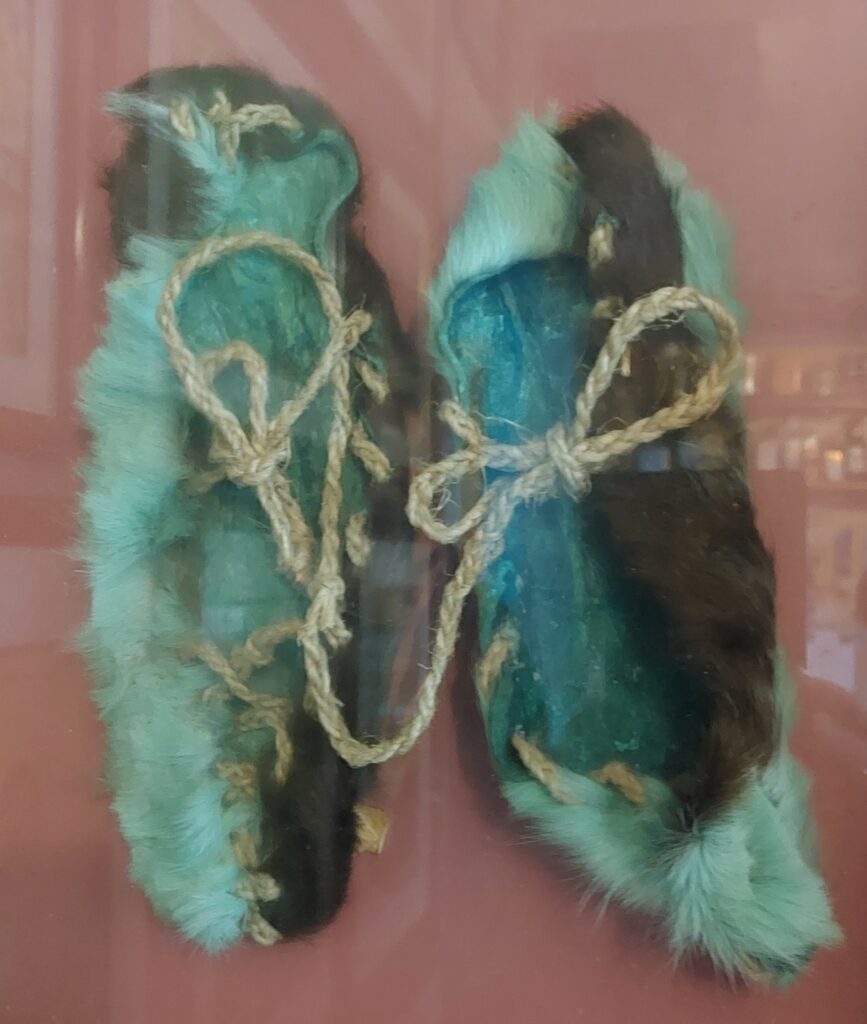
A somewhat more solid boat, Plassy, shipwrecked on a reef outside Inisheer in 1960. HMS Juliet was commissioned by the British Navy at the beginning of WWII, and it served, among other assignments, during the Allied landings in French North Africa. After the war the navy no longer had use for the ship and it was sold as a merchant ship in 1947. In 1951 it was bought by the Limerick Steamship Company, and renamed MV Plassy, after the bank Plassey by the river Shannon, upstream Limerick city. When she sank, Plassy was filled with general cargo consisting of, among other things, whiskey, woolen yarn and shoes.
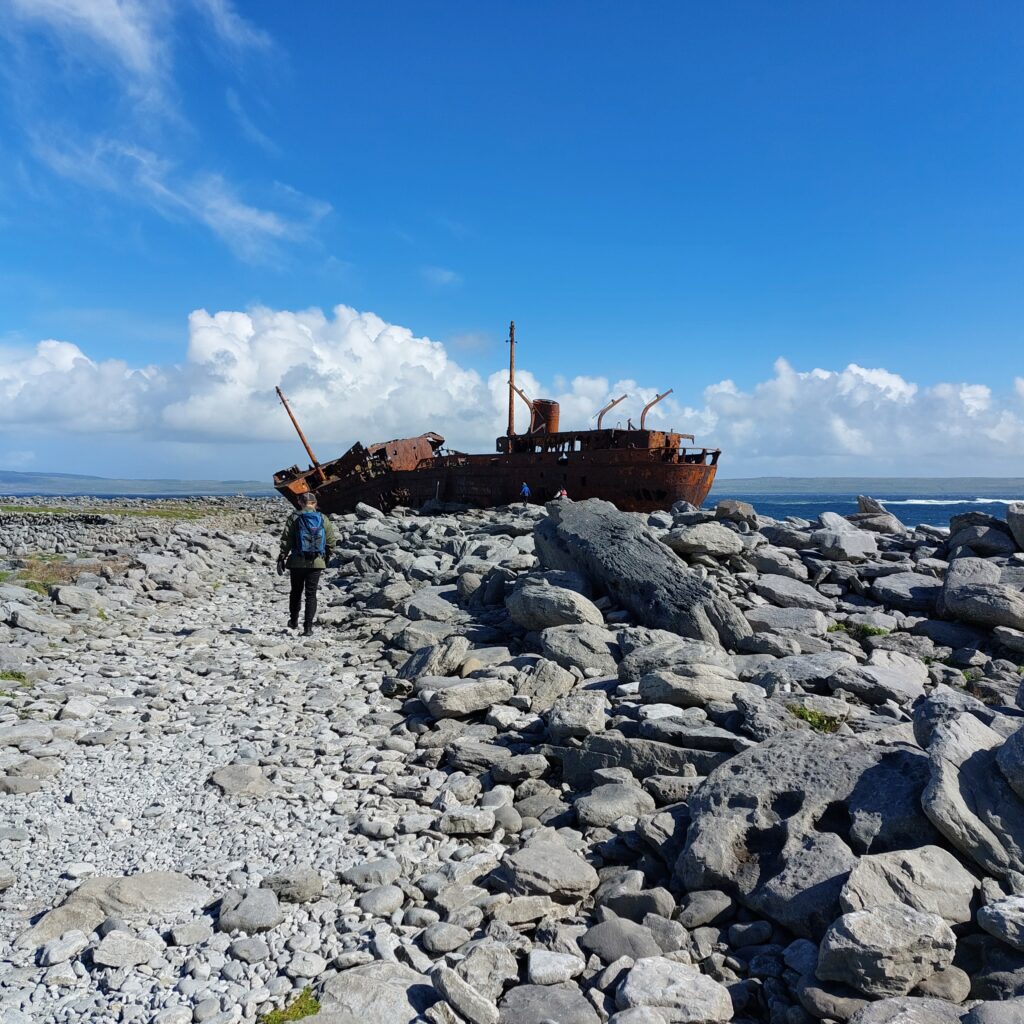
It was an hazarduous rescue operation by night, March 8th, 1960. The crew of 11 couldn’t get ashore on their own, because the lifeboat had disappeared in the storm. Conditions at Inisheer were even simpler then than now; no cars, electricity, roads – or even toilets (!), as was stated at the 50th anniversary of the incident. The 15 rescuers – also known as ‘The Rocket Men‘ were already struggling to get the equipment cart out (which got stuck 4 times on the way to the sea), but the weather was getting worse and there was almost no visibility due to swirling sand. Once by the shore, they needed 3 attempts to get a line shot over to the ship. Most of the men wore pampooties on their feet, but as they became too slippery on the rocks, some of the rocket men ended up working in their woolen socks.
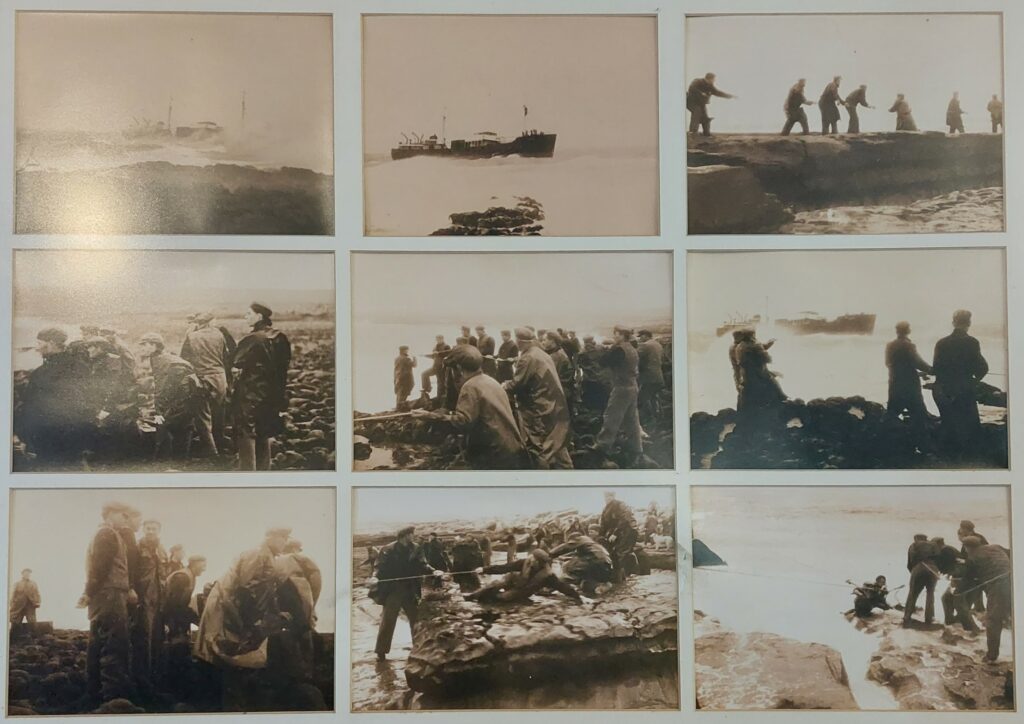
The rescue itself took 4 ½ hours, using a breecher buoy. This is a device where short canvas trousers are attached to a lifebuoy, which is pulled forward using a rope and a pulley (as a zip-line). This way you can save one person at a time, and the operation at Plassy was very successful. The whole crew were rescued, albeit quite chilled, after being pulled ashore through the cold water. This happened during lent, but the islanders immediately broke it by giving the shipwrecked whiskey to warm themselves. The crew had been paid the day before and the money was in their pockets, so they went straight to the pub to dry the money in front of the fire. That was how the money could be spent straight away.
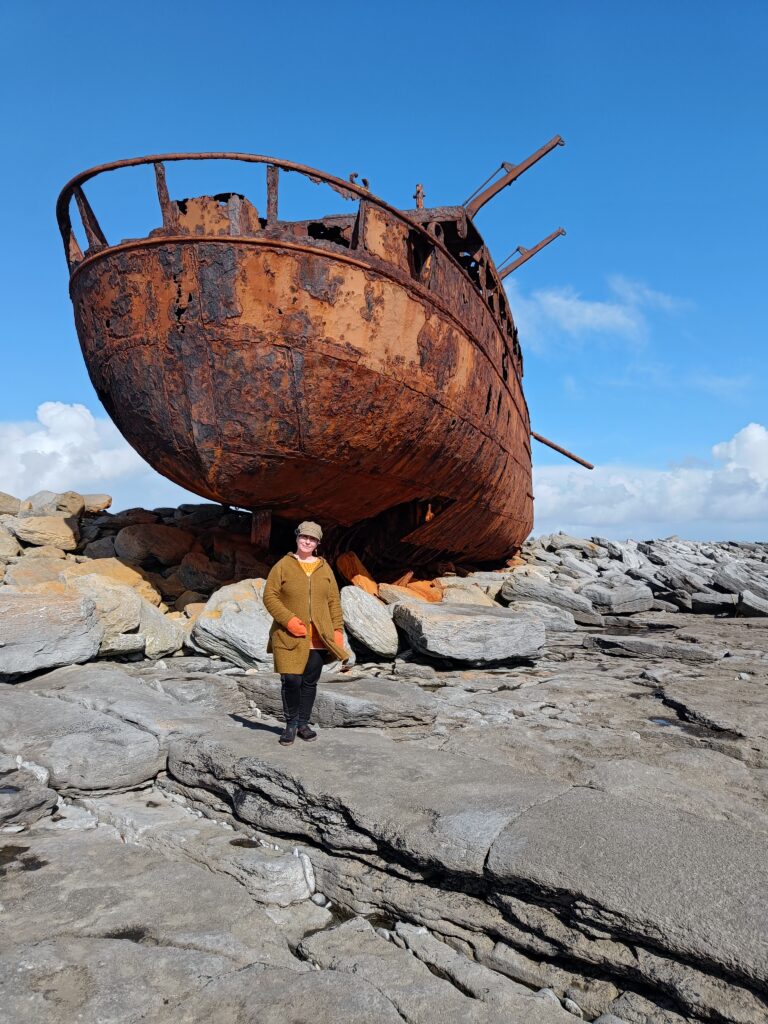
Two weeks passed until the weather became suitable for the ship to be embarked again. The islanders boarded at low tide, and salvaged both wool, shoes and whiskey. They were also able to pick up doors and other wood, which fit well into ongoing construction projects. The priest insisted from the pulpit that robbing the wreck should not happen, but that didn’t help at all, instead that’s when the looting really picked up speed. Bottle after bottle of Scottish ‘Black & White’ was hidden in the potato fields (they wanted to avoid problems with customs), and shoes exchange took place for months afterwards. It took time to get the right and left shoes interchanged so that a suitable pair was obtained. As a well-deserved ‘punishment’, the customs officer had the flu with him when he finally showed up – which put all the islanders to bed.
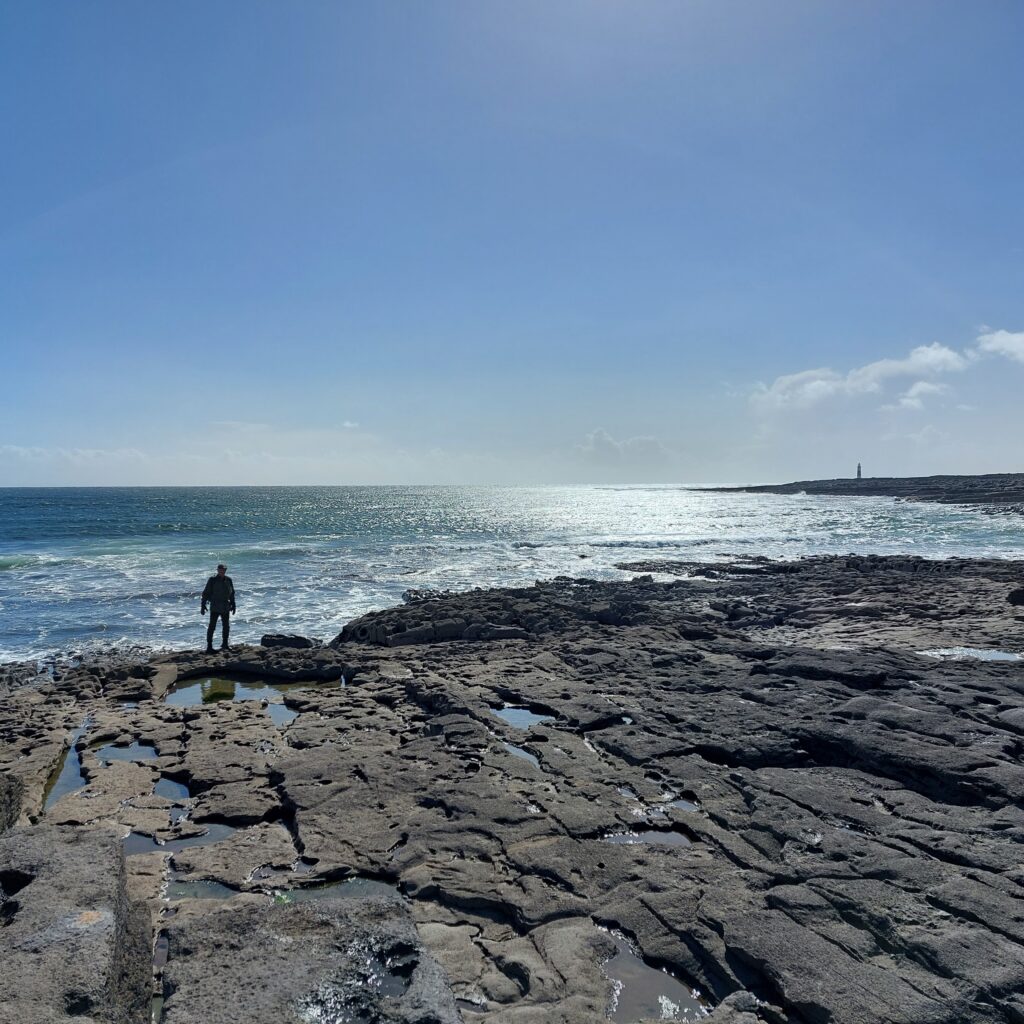
We wanted to swim at Plassy’s! The wreck is now situated on Inisheer itself, this happened in a later storm. Here it is relatively shallow with a continuous train of incoming swells. There were some discussions about the bathing place. Knut wanted to swim as close to the wreck as possible, but Idun was skeptical. After all, we had been warned against swimming on this side of the island, because of the tides. But a short distance away there was a small beach, and there it was possible to have a bath without being knocked unconscious against stones and rocks.
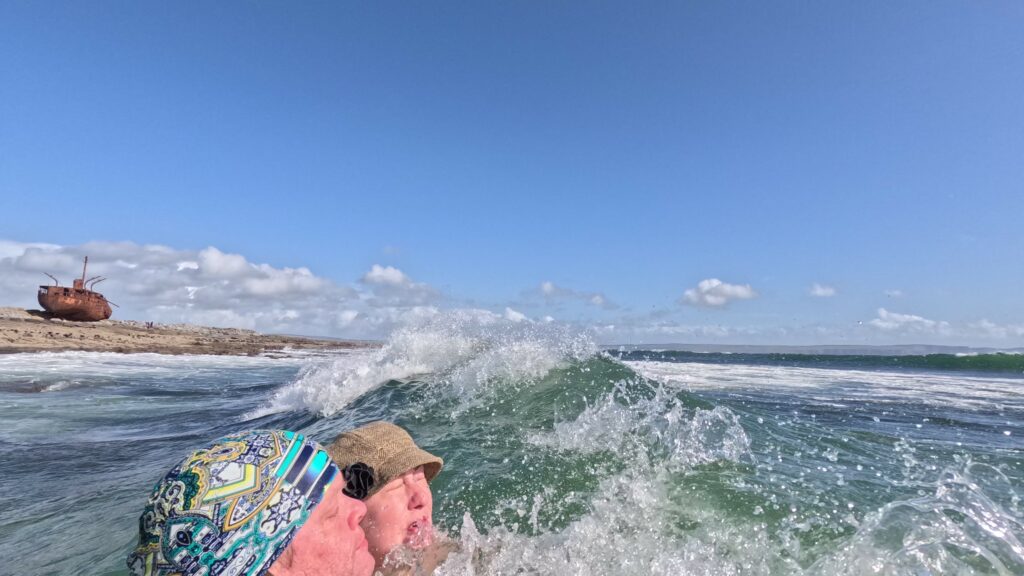
Plassy has become a tourist attraction in itself, and it has been decided to leave the wreck where it is. As part of the opening sequence of the TV series ‘Father Ted’, she has become part of the Irish folk soul. And fine, she is, we think. Rust can be very beautiful!
Sources:
– The article ‘The Plassey Shipwreck‘, Ireland’s Own, on the occasion of the 50th anniversary of the sinking.
– Wikipedia
